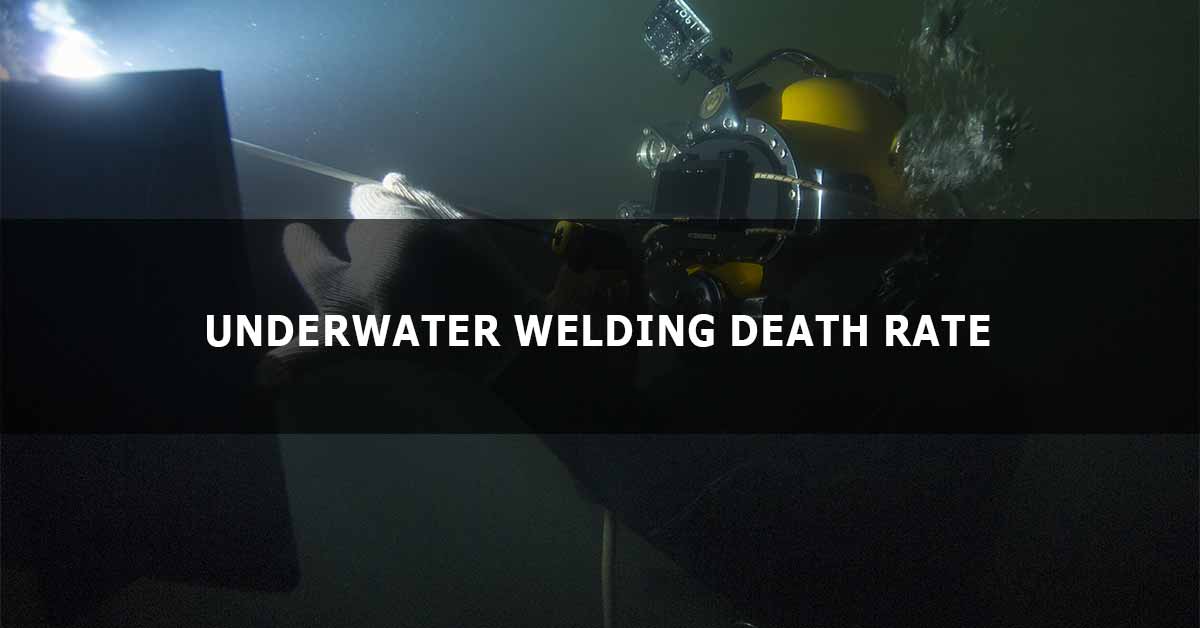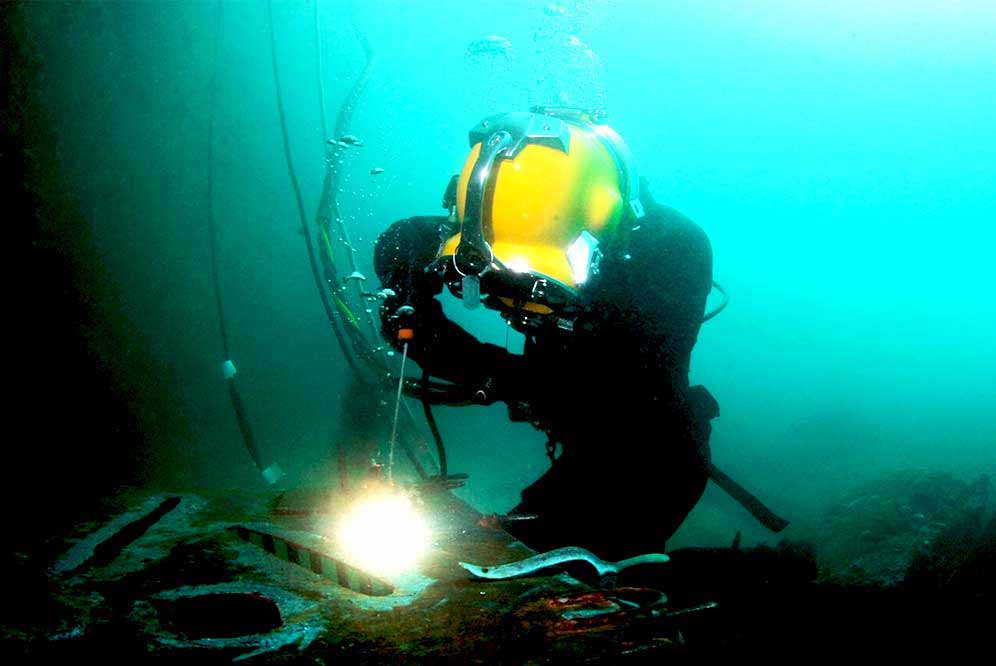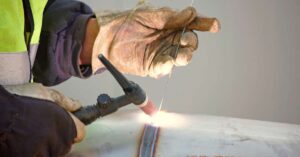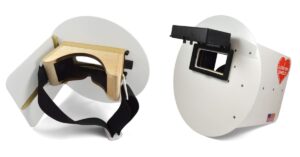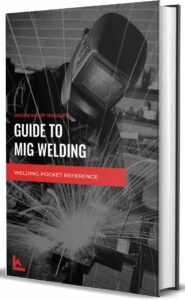Being an underwater welder differs from what it’s cracked up to be. Sure, the pay is good. It is more than lucrative as welders who do their work underwater can earn between $100,000 and $200,000 a year. However, underwater welding also has a unique set of dangers and risks that can lead to severe injuries or even death for welders. The underwater welding death rate is estimated at around 15%, making it one of the most dangerous jobs on the planet.
The welding process involves working in confined spaces, at great depths, and in highly pressurized conditions. Due to the hazardous nature of this profession, there have been concerns about the safety of underwater welders and the high fatality rate associated with this job.
In this article, we will explore the risks and challenges of underwater welding, the accidents or injuries that underwater welders may sustain, and the measures that can be taken to improve the safety of this profession.
Underwater Welding Dangers and Injuries
Welding by itself is considered a dangerous trade. Immense heat, handling various pieces of metals, the possibility of shrapnel flying past your head, and not to mention all the suffocating fumes that directly result from welding.
But when we add another frightening element into the picture, like water, things get even dicier, particularly if you are completely submerged while doing it. There are numerous hazards that underwater welding comes with, many of which can cause permanent injuries and even more that could lead to death.
Some of the potential risks underwater welders face include the following:
1. Electrocution
Mixing electricity and water is never a good thing, particularly when it comes to seawater which contains salt, ions, and various metals. Unsuitable equipment used in water welding can easily lead to electrical shocks and death.
2. Hypothermia
The depths of an ocean can be extremely cold; in fact, it can lead to tissue damage and organ failure. During deep commercial diving, where welders spend hours in the water, their bodies are exposed to cold temperatures. Welders must wear suitably insulated rubber wetsuits when going very deep.
3. Drowning
According to the Occupational Safety and Health Administration (OSHA), drowning is the most common cause of death among underwater welders. Since many underwater welders work hundreds of feet beneath the surface, they are surrounded by water from all angles. One wrong move or equipment failure can lead to certain death.
Diving gear failures, such as leaking masks, hoses, or oxygen tanks, can also lead to drowning. Even the most experienced underwater welders are not safe and should be careful not to get entangled or pinned by their equipment when visibility drops as they go deeper into the water.
4. Explosions
There are numerous underwater gas pockets we might not be aware of. Once hydrogen and oxygen come into contact, the gas pocket can explode and cause mayhem for the submerged welders.
5. Decompression sickness
Underwater welders sometimes go very deep to do their work and run the risk of going too deep too fast. Sudden pressure changes can affect the body and cause decompression illness. It can even lead to arterial gas embolism if a welder is not careful enough.
Underwater Welder Life Expectancy
We cannot deny the fact of how dangerous underwater welding is. The Occupation Safety and Health Administration (OSHA) states that 6 to 13 people die yearly in diving accidents. Unfortunately, the number may be much higher as these statistics are outdated.
There has been much research on the subject to show how dangerous underwater welding is. One of them is found in the United States Center for Disease Control and Prevention’s article (based on OSHA research administered between 1989 and 1997), which states that 5 out of 3,000 welders die yearly, with drowning cited as the number one cause.
A study before this was conducted in the North Sea and the Gulf of Mexico. The study encompassed the period between 1968 and 1978, resulting in 900 deaths in the Gulf of Mexico and 700 in the North Sea.
The author of the research stated that the two main factors for underwater welders’ death were host factors (behavioral dysfunction and level of experience) and environmental factors (supervisor’s errors and equipment failure). It was concluded that a diver’s inexperience was the prevailing cause of death.
But the most recent study came from a diving supervisor named Kyla Richter. She based her research on the findings gathered by The Divers Association (TDA) between 2002 and 2014. From those records, she could conclude that a diver’s average age is 37. Therefore, most underwater welder deaths happen between 35 and 40.
If you consider that most underwater welders start diving school at the age of 20, by the time they are 35, they have had a 15- year long career. This means that deaths cannot be attributed to the diver’s inexperience. She concluded that most fatalities happen due to companies’ poor safety measures. Kyla also advocated for improved working conditions for employees and overall safety.
Is Underwater Welding Worth It?
Becoming an underwater welder certainly comes with its merits. One is financial compensation, as a certified welder can earn up to $300,000 a year. Also, earning a commercial diver’s license takes little time, as one can acquire it in up to a year.
This means that a person can start working and earning much faster than a doctor or a lawyer, who makes the big bucks but take significantly longer to obtain the licenses needed to practice their trait.
Not to mention that underwater welding comes with the merits of traveling worldwide. You can see the sites and tell stories that only a few people have experienced. But it all comes at a price. All the above factors and numbers indicate how dangerous this job can be. Even highly trained and skilled operators can get injured or even die.
Safety Measures for Welding Underwater
Underwater welding is a high-risk occupation that requires adherence to strict safety measures. By following these safety measures, underwater welding accidents can be minimized, and the safety of the welders can be ensured.
Some of the safety procedures for welding underwater include:
- Wearing a rubber dive suit and gloves to avoid electric shock.
- Using a welding lens to protect the diver/welder from ultraviolet light.
- Using specially designed electrodes and electrode holders for underwater applications.
- Welders should undergo specialized training in underwater welding techniques.
- The welding equipment must be regularly inspected and maintained to ensure its safety.
- Proper decompression procedures must also be followed to prevent decompression sickness.
- Employers should conduct regular risk assessments to identify potential hazards and implement necessary controls.
Underwater Welding Death Rate Conclusion
The math is simple; Underwater welding is a dangerous profession! The underwater welding death rate is 15 percent. The danger comes from all angles. Whether it is electrocution, decompression, explosions, or drowning, a lot of stuff can kill you.
However, the returns are fantastic, as you will earn a doctor’s salary with less than half of the time invested in getting a license and starting to work. It is up to you if you are willing to take on this job’s risks.
By adhering to strict safety measures, such as using specialized equipment, undergoing specialized training, and following proper decompression procedures, the risks associated with underwater welding can be minimized, and the safety of the welders can be ensured.
References:
- Underwater Welding Death Rate | How Dangerous is Underwater Welding?
- UNDERWATER WELDING DANGERS AND INJURIES

